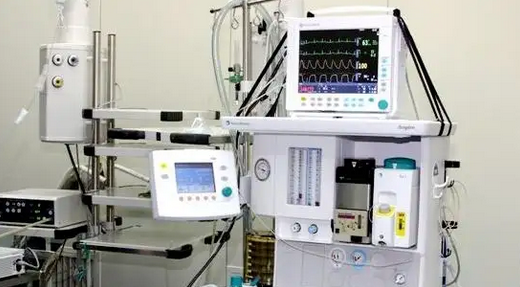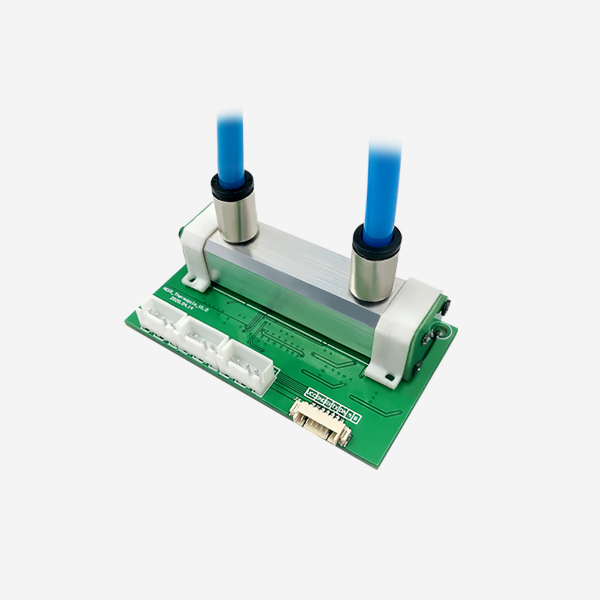Since the outbreak of COVID-19 in the world, more and more people have paid attention to the medical instrument industry. From a series of measures introduced by the state to support the medical instrument industry to people buying medical funds, it shows that the development of medical instruments in China is stepping into a new stage. Medical devices are inseparable from the gas detection industry, because most drugs and raw materials used in treatment require gas sensors to be tested online.

Specifically, what sensors do the medical device environment industry need?
Oxygen sensor
Oxygen is essential in the medical industry and depends on the use of medical devices. Some medical equipment must be equipped with oxygen sensors, such as ventilators, anesthesia machines, high-pressure oxygen tanks and baby incubators, used to display the value of oxygen concentration.
Oxygen ventilator uses general operation to connect ventilator pipe, oxygen and power supply. The startup sequence is air compressor – humidifier – main engine. First determine whether controlled or assisted breathing, and then determine the mode of mechanical ventilation. First use of a home ventilator: You may feel uncomfortable when using the ventilator for the first time. This is a normal phenomenon. After a few deep breaths and a period of self-adjustment, the patient will gradually get used to the new feeling. If a nose mask is used, try to keep the mouth closed during treatment. Air leakage in the mouth can reduce efficacy.
Oxygen breathing machine will use oxygen sensor to detect oxygen concentration, at present our high quality oxygen sensor, the product features are as follows:
1. Long service life, 5 years
2. Output mV voltage signal, easy to process
3. Almost no interference from acidic gases such as CO2,SO2 and NO2
4. Electrochemical principle, stable performance
Carbon dioxide sensor
The application of medical carbon dioxide sensor is mainly ventilator, anesthesia machine, infant incubator and human end-expiratory concentration environment, used to monitor the vital signs of the human body.

The component used to monitor CO2 in the ventilator is a CO2 sensor. The application of sensor technology can not be ignored in the medical field. The application of sensor technology is indispensable in common medical devices. The CO2 sensor used in the ventilator needs to meet the conditions of high-speed response. Our infrared carbon dioxide sensor, the NDIR CO2 sensor, features high-speed detection (20Hz) and its sensing technology of non-diffused infrared light absorption is suitable for capturing rapid changes in CO2 concentration, such as metabolic assessment and ventilator.
Nitric oxide sensor
Medical nitric oxide sensor is mainly used in exhaled nitric oxide analyzer (FeNO) to measure the concentration of NO in exhaled air of human body
Nitric oxide (NO) is a small molecule gas with colorless and high lipid solubility. It is an endogenous biological regulatory factor produced by the body and has many biological activities. Exhaled nitric oxide detection, as its name implies, is to measure the concentration of NO in exhaled air of the human body, referred to as FeNO detection.
The main part of nitric oxide production in human body is in the respiratory tract. A number of studies have found that increased FeNO may occur when airway inflammation occurs. FeNO can be used to identify copd, asthma, copd overlap syndrome and other chronic airway diseases with similar clinical manifestations, and to predict the treatment effect and prognosis of COPD patients.
Exhaled nitric oxide detector was approved for clinical application by THE US FDA in 2008, and was rated as one of the top ten medical innovations in the world at the Us Medical Summit in 2010. It has been marketed in more than 60 countries around the world, including Europe, America, Japan and other developed countries, with more than 50 million cases.
Anesthetic gas sensor
Currently known gas anesthetics are: nitrous oxide, ether, chloroform, ethyl chloride, ethylene, ethylene ether, cyclopropane, trichloroethylene, isopropylene ethylene ether, propyl methyl ether vinyl chloride ether, ethyl vinyl ether, halothane, meoxyflurane, enflurane, isoflurane, desflurane and so on. Most anesthetic gases are toxic to a certain extent, and some are flammable. Although many of them are no longer used because of their low safety factor, the use of anesthetic gases still needs to be carefully quantified, and these anesthetic gases need to be detected by sensors.
In addition to the above mentioned, methane sensors, hydrogen sensors, gas flow sensors and so on are widely used in the medical device industry. Different from ordinary sensors, the sensors used in medical instruments require higher performance. Such as: excellent linearity, fast response speed, high temperature resistance, high humidity resistance, flow insensitive, no response to anesthetic gas, long life.